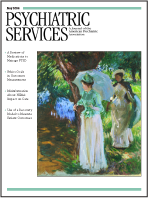Taking Psychology and Law Into the Twenty-First Century Forensic Psychology: From Classroom to Courtroom
Two recently published edited volumes focus on the contributions of psychology to the law. The first, Taking Psychology and Law Into the Twenty-First Century, is edited by James R. P. Ogloff, a former president of the American Psychology-Law Society. During his tenure, Ogloff initiated a review of the field of psychology and the law, and this book represents the result of that review.
The book is concerned mainly with the impact of psychological science on the legal system. Ogloff defines the field of legal psychology broadly as "the scientific study of the effect of law on people; and the effect people have on the law. Legal psychology also includes the application of the study and practice of psychology to legal institutions and people who come into contact with the law." The 11 chapters cover a wide range of issues, including forensic assessment instruments, violence risk assessment, competence to stand trial, eyewitness research, research on jury selection and jury decision-making processes, civil law, and psychological injury. Each chapter is written by a group including senior researchers as well as more junior scholars, and the collective knowledge and experience of the authors and the editor is extremely impressive. The chapters are well written, comprehensive, and thoughtful.
In addition to the high quality of its individual chapters, on the whole the book clearly succeeds in its main mission: to identify the state of the science of legal psychology at the turn of this century and to make recommendations for where the field should be going. Each chapter not only identifies the current state of knowledge and its contribution to the legal system but also candidly assesses the obstacles to bridging the gap between scientific knowledge and legal practice. The book's contributors avoid the trap of complaining that the legal system simply does not understand the science; they acknowledge areas in which the research may not have ecological validity and recommend that future research should reflect a multidisciplinary effort, including attorneys. Taking Psychology and Law Into the Twenty-First Century represents a thoughtful, comprehensive, and intellectually stimulating review of the field and is likely to affect research on psychology and law for years to come.
The second book, Forensic Psychology: From Classroom to Courtroom, edited by Brent Van Dorsten, focuses on the areas of clinical practice (clinical forensic psychology). The book's 12 chapters include discussions of expert mental health testimony, ethical issues in forensic evaluations, use of psychological testing for forensic purposes, malingering, competency to stand trial, civil commitment, child custody evaluations, child abuse, sex offenders, personal injury, and forensic neuropsychology.
Van Dorsten accurately frames the mandate for forensic mental health professionals by noting that forensic clinicians need not be "junior attorneys" and focuses the book on providing clinicians with a working knowledge of the legal issues and the clinical methods used to address them. However, Forensic Psychology is a text in which the whole is less than the sum of its parts. Although the editor acknowledges that the book is not fully inclusive, strikingly missing are chapters about criminal responsibility and assessment of violence risk—although the latter is briefly but accurately summarized in the chapter about civil commitment. The individual chapters, written or co-written in many cases by leading scholars in the field, provide good summaries of these areas as well as practical guidance. However, novice practitioners will more likely be attracted to other, more comprehensive texts in this field, such as those by Melton and colleagues (1) or by Goldstein (2).
Dr. Packer is associate professor of clinical psychiatry at the University of Massachusetts Medical School in Worcester.
1. Melton G, Petrila J, Poythress N, et al: Psychological Evaluations for the Courts, 2nd ed. New York, Guilford, 1997Google Scholar
2. Goldstein AM (ed): Handbook of Psychology, vol 11: Forensic Psychology. Hoboken, NJ, Wiley, 2002Google Scholar



